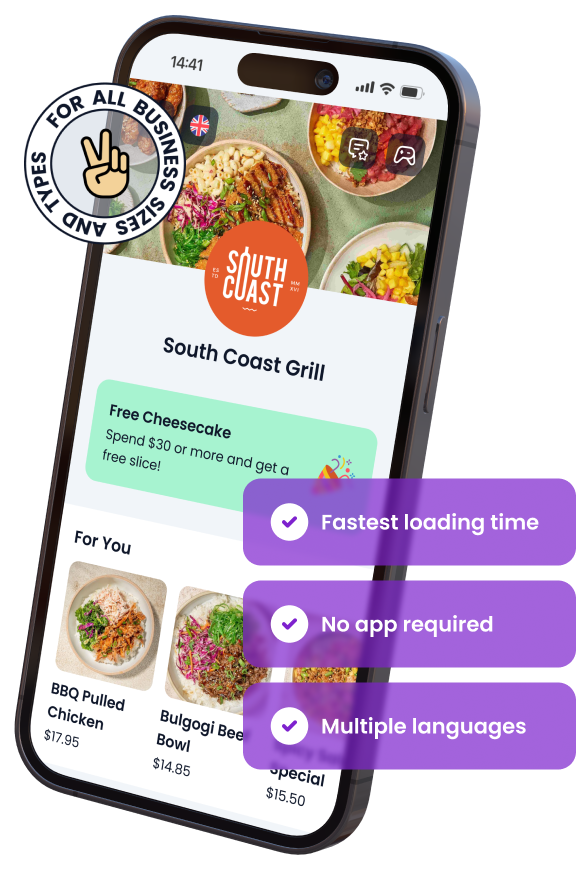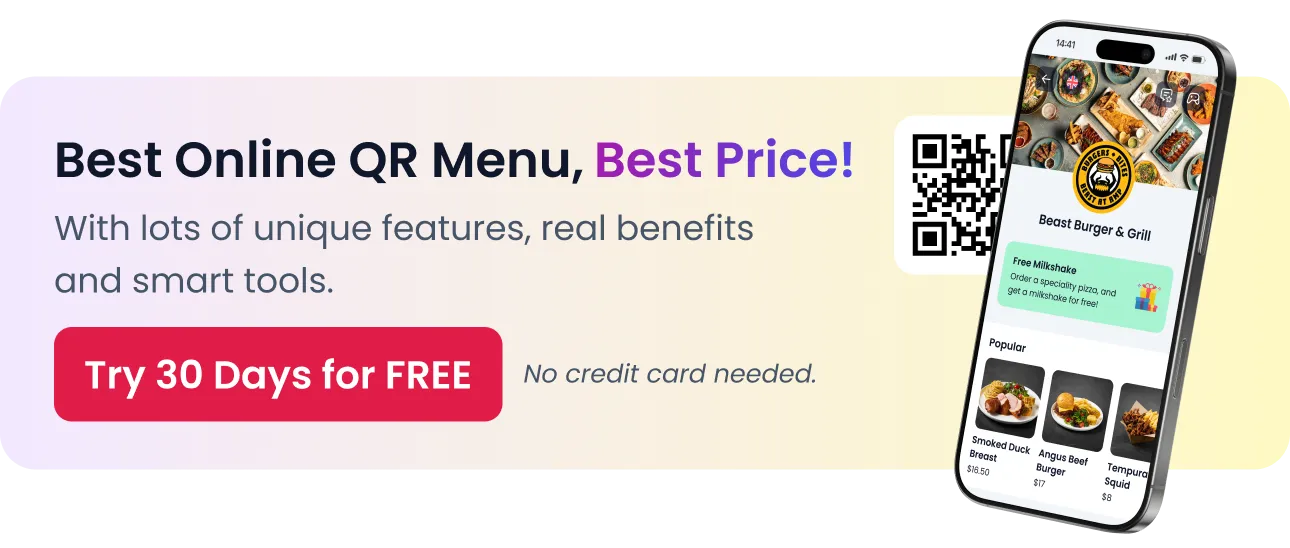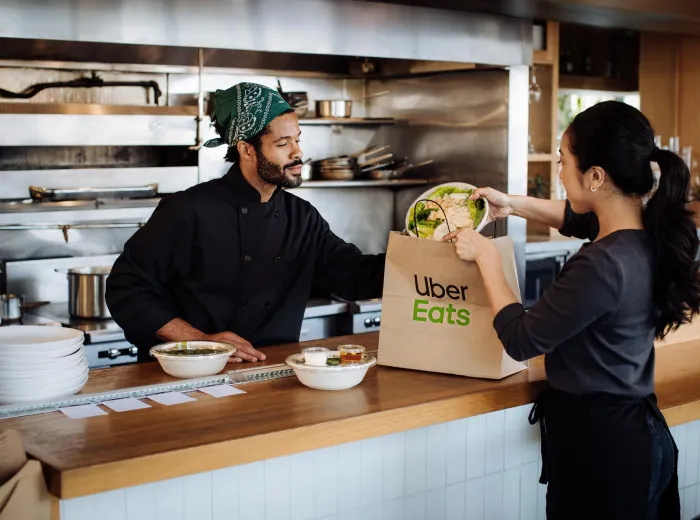

How to Write a Successful Restaurant Business Plan? Step-by-Step Guide
Launching a restaurant is an exciting venture, but success in the competitive food industry requires more than just passion for great food. A well-structured business plan is the foundation of a successful restaurant, guiding owners through financial planning, operations, marketing, and long-term growth. Whether you are opening a small café, a fine dining restaurant, or a fast-casual eatery, a business plan helps you stay focused, attract investors, and navigate challenges effectively.
A comprehensive restaurant business plan serves several critical purposes:
- Securing funding – Investors and banks need a solid plan before they consider financing your restaurant.
- Defining your concept – Clearly outlining your restaurant’s theme, target audience, and unique value proposition.
- Ensuring financial stability – Forecasting expenses, revenue, and profit margins to maintain a sustainable business.
- Setting operational guidelines – Establishing clear processes for daily management, staffing, and inventory control.
- Guiding marketing efforts – Identifying how to promote your restaurant and attract loyal customers.
Without a clear business plan, many restaurant owners struggle with financial mismanagement, poor location choices, or lack of market research. In this guide, we’ll walk you through each step of creating a successful restaurant business plan, from crafting an executive summary to developing a solid financial plan. Let’s get started!
Why Every Restaurant Needs a Business Plan
Many aspiring restaurant owners believe that having a great idea and excellent recipes is enough to guarantee success. However, the reality is that running a profitable restaurant requires careful planning, financial discipline, and strategic decision-making. A business plan acts as a roadmap, helping you define your goals, anticipate challenges, and create a structured approach to operations. Whether you’re seeking investment, applying for a loan, or simply organizing your ideas, a well-crafted business plan is essential for long-term success.
Is a Business Plan Necessary for a Restaurant?
Absolutely! A restaurant business plan isn’t just a formality—it’s a critical tool that helps owners make informed decisions and avoid common pitfalls. Here’s why every restaurant needs one:
- Prepares you for financial planning – Helps estimate startup costs, operating expenses, and expected revenue.
- Guides decision-making – Provides a structured approach to staffing, inventory, and daily operations.
- Increases chances of success – Restaurants with a clear plan are more likely to survive and grow.
- Prevents costly mistakes – Identifies risks and allows owners to develop contingency plans.
Without a plan, restaurant owners often struggle with budgeting, marketing, and operational efficiency, leading to financial instability and business failure.
How a Business Plan Helps Secure Funding
If you’re looking for investors or applying for a restaurant business loan, a solid business plan is non-negotiable. Banks, lenders, and investors need proof that your restaurant is a viable investment opportunity. A business plan provides:
- Clear financial projections – Lenders need to see expected revenue, expenses, and profitability.
- Defined business strategy – Shows how you plan to attract customers and stand out from competitors.
- Risk assessment and solutions – Demonstrates your awareness of challenges and how you plan to overcome them.
A well-researched business plan increases your credibility, making it easier to secure funding for your restaurant’s launch or expansion.
Business Planning for Growth and Long-Term Success
A restaurant business plan isn’t just about launching your business—it’s also about sustaining and growing it. As your restaurant evolves, having a structured plan helps you:
- Scale operations efficiently – Plan for additional locations, expanded menus, or new revenue streams.
- Adapt to market changes – Adjust marketing strategies and pricing based on customer trends.
- Optimize profitability – Identify areas to cut costs without sacrificing quality.
- Enhance operational efficiency – Streamline processes for staffing, inventory, and customer service.
Many successful restaurant owners revisit and update their business plans regularly to stay aligned with market trends and business goals.
Key Components Every Business Plan Must Include
Every great restaurant business plan includes several essential sections to ensure clarity and effectiveness. These include:
- Executive Summary – A brief overview of the business, including concept, location, and financial highlights.
- Restaurant Concept and Vision – What makes your restaurant unique and appealing to customers?
- Market Analysis – Research on industry trends, target customers, and competitors.
- Menu Planning – An outline of your menu offerings and pricing strategy.
- Business Structure and Ownership – Details on the business’s legal structure and key stakeholders.
- Operations Plan – Staffing, daily operations, and supplier relationships.
- Marketing Strategy – Online and offline promotional efforts to attract and retain customers.
- Financial Plan – Startup costs, revenue forecasts, and funding needs.
Having these sections in your business plan ensures that your restaurant has a clear direction and a strong foundation for success.
Executive Summary – Your Restaurant at a Glance
The executive summary is the first and most crucial section of your restaurant business plan. It serves as a snapshot of your entire plan, highlighting the key details that will capture the attention of potential investors, lenders, or business partners. While it appears first in the business plan, it’s often written last because it summarizes the most critical aspects of your restaurant concept, financial plan, and market strategy.
A well-written executive summary should be concise (1-2 pages) yet powerful enough to spark interest and encourage readers to explore the full business plan.
What is an Executive Summary?
The executive summary is a high-level overview of your restaurant business plan. It should quickly communicate:
- What your restaurant concept is – The theme, cuisine, and target market.
- Why your restaurant will succeed – Unique value proposition and competitive advantage.
- Where and when you plan to open – Location details and timeline.
- How much funding you need – Financial summary and investment requirements.
Think of it as your restaurant’s elevator pitch—a compelling summary that makes readers want to learn more.
What to Include in Your Executive Summary?
Your executive summary should be structured clearly, covering the following key points:
1. Business Name, Location, and Concept
- Name of your restaurant and why you chose it.
- Planned location and reasoning behind the choice (foot traffic, demographics, etc.).
- Restaurant concept and theme (e.g., fine dining, fast casual, farm-to-table).
Example:
“Sunset Bistro is a modern farm-to-table restaurant in downtown Miami, specializing in locally sourced, seasonal dishes. Located in a high-foot-traffic area, it aims to attract professionals, foodies, and health-conscious diners.”
2. Brief Restaurant Vision and Mission
- Vision: The long-term goal of your restaurant.
- Mission: What your restaurant stands for and how it will serve its customers.
Example:
“Our vision is to become Miami’s go-to destination for sustainable, organic dining. Our mission is to serve delicious, high-quality food while supporting local farmers and reducing environmental impact.”
3. Target Market and Unique Selling Proposition (USP)
- Who your ideal customers are (age, income, dining preferences).
- How your restaurant will stand out from competitors.
Example:
“Sunset Bistro targets health-conscious professionals and food enthusiasts aged 25-45. Unlike other restaurants in the area, we focus exclusively on farm-to-table dining with zero processed ingredients.”
4. Financial Highlights (Projected Revenue and Funding Needs)
- How much startup capital you need and how you plan to use it.
- Projected revenue and profitability expectations.
- Whether you’re seeking investment or loans.
Example:
“We require an initial investment of $500,000 for lease, kitchen equipment, staffing, and marketing. Based on industry trends and financial projections, we anticipate reaching profitability within 18 months, generating $1.2 million in annual revenue by year three.”
Writing an Executive Summary That Grabs Attention
To make your executive summary engaging and impactful, follow these tips:
✅ Be concise – Keep it to 1-2 pages, avoiding unnecessary details.
✅ Highlight what makes you unique – Emphasize your USP.
✅ Use strong, confident language – Show enthusiasm and industry knowledge.
✅ Make it investor-friendly – Focus on growth potential and profitability.
A strong executive summary sets the tone for the entire business plan, increasing the chances of securing funding and setting your restaurant up for long-term success.
Restaurant Concept and Vision – Defining Your Brand
Your restaurant’s concept and vision are the foundation of your business. They define what kind of dining experience you will offer, the emotions you want to evoke in customers, and how you will stand out in a competitive market. A clear concept and vision not only guide branding and operations but also help attract the right audience and investors.
How to Choose a Winning Restaurant Concept?
Selecting the right restaurant concept is a balance between passion, market demand, and profitability. To make the right choice, consider:
✅ Cuisine Type – Will you serve Italian, Japanese, vegan, fusion, or another specialty?
✅ Service Style – Will it be a fine dining, fast casual, food truck, or grab-and-go restaurant?
✅ Ambiance & Theme – What kind of experience will customers have? Cozy, luxurious, trendy, or minimalist?
✅ Target Market Fit – Is there demand for your concept in the location you plan to operate?
✅ Profitability & Scalability – Does your concept allow for future expansion and sustainable margins?
Crafting a Unique Value Proposition (UVP)
A unique value proposition (UVP) is what makes your restaurant different from the competition. It answers the question: Why should customers choose your restaurant over others?
To craft a strong UVP, focus on:
- Quality & Ingredients – Do you use organic, locally sourced, or premium ingredients?
- Experience & Atmosphere – Is your restaurant Instagrammable, themed, or offering a special dining experience?
- Service & Convenience – Do you offer express service, table-side cooking, or unique ordering methods?
- Pricing Strategy – Are you providing affordable gourmet dishes or exclusive high-end dining?
Example UVP Statements:
- “The first fully organic vegan fast-casual restaurant in New York with a seasonal rotating menu.”
- “A nostalgic 1950s American diner in the heart of London, serving classic milkshakes and gourmet burgers.”
- “An immersive Japanese dining experience with tableside sushi chefs and authentic decor.”
How to Define Your Brand Identity and Positioning?
Your brand identity represents the personality of your restaurant and influences how customers perceive it. Key elements include:
🔹 Restaurant Name – Choose a name that reflects your concept and is easy to remember.
🔹 Logo & Colors – Visual elements that align with your theme and concept.
🔹 Brand Voice & Messaging – The tone of your communication (formal, casual, playful, sophisticated).
🔹 Restaurant Design & Decor – Interior, menu design, and staff uniforms should match your concept.
Example: A high-end steakhouse targeting business professionals will have an elegant logo, dark wood interiors, and refined messaging, while a tropical-themed tiki bar will have colorful branding and playful language.
Bringing It All Together
Your restaurant concept and vision should be cohesive and strategically positioned to attract the right audience and stand out in the market. By carefully defining your concept, UVP, and branding, you set the stage for a memorable and profitable restaurant experience.
Market Analysis – Understanding the Industry and Competition
A thorough market analysis is a crucial step in your restaurant business plan. It helps you understand industry trends, customer preferences, and competitor strategies, allowing you to position your restaurant for success. Without proper research, many restaurants struggle to attract customers or compete effectively. This section will guide you through the essential components of a strong market analysis.
What is a Market Analysis and Why is It Important?
A market analysis is an in-depth study of the restaurant industry, local dining trends, and competitors to determine whether your restaurant concept is viable. It allows you to:
✔ Identify your target audience – Understand who your ideal customers are and their dining preferences.
✔ Assess market demand – Ensure there’s a need for your restaurant concept in the selected location.
✔ Evaluate competitors – Learn from competitors’ strengths and weaknesses to position your restaurant strategically.
✔ Develop a pricing strategy – Set menu prices that are competitive yet profitable.
✔ Refine your marketing plan – Craft messages and promotions that resonate with your audience.
By conducting a solid market analysis, you minimize risks and increase your chances of long-term success.
How to Research the Restaurant Industry?
Before diving into your specific market, it’s important to understand the broader restaurant industry trends. Research sources include:
- Industry reports – Check data from sources like IBISWorld, Statista, and the National Restaurant Association.
- Local economic data – Look at population growth, income levels, and tourism statistics.
- Consumer dining habits – Study reports on food trends, delivery preferences, and emerging concepts.
- Technology and innovations – Explore how digital menus, online ordering, and AI-driven restaurant management are evolving.
Understanding current and future trends will help you shape your restaurant’s offerings to meet customer expectations.
How to Identify Your Target Audience?
To successfully attract customers, you need to define your ideal customer profile based on:
1️⃣ Demographics – Age, gender, income level, and occupation.
2️⃣ Dining Preferences – Do they prefer casual dining, fine dining, takeout, or delivery?
3️⃣ Lifestyle and Behavior – Are they health-conscious, adventurous eaters, or budget-conscious diners?
4️⃣ Spending Habits – How much do they typically spend on dining out?
Example Target Audience for a Vegan Café:
- Women aged 25-40, urban professionals with a disposable income.
- Health-conscious and willing to pay a premium for organic, locally sourced meals.
- Active on social media and likely to share their dining experiences.
Clearly defining your target audience ensures that your marketing, menu, and pricing strategies align with customer expectations.
Competitive Analysis: Who Are Your Competitors?
A competitive analysis helps you understand the strengths and weaknesses of existing restaurants in your area. Follow these steps:
1. Identify Your Competitors
✔ Direct competitors – Restaurants with a similar cuisine and service style.
✔ Indirect competitors – Alternative dining options like food trucks, meal kits, and grocery store meal sections.
2. Analyze Their Strengths and Weaknesses
Gather insights on competitors by examining:
- Menu offerings – What’s unique about their dishes?
- Pricing strategy – Are they budget-friendly, mid-range, or premium?
- Customer experience – Do they have great service, ambiance, or online presence?
- Marketing efforts – How do they attract and retain customers?
3. Identify Market Gaps
Look for opportunities that competitors aren’t addressing, such as:
- Faster service or online ordering.
- More plant-based or allergen-friendly options.
- A better dining atmosphere or unique theme.
- Late-night or early breakfast service.
By identifying market gaps, you can position your restaurant to offer something new and valuable.
SWOT Analysis: Understanding Your Position in the Market
A SWOT analysis is a structured way to evaluate your restaurant’s strengths, weaknesses, opportunities, and threats.
| SWOT Factor | Examples |
|---|---|
| Strengths (Internal) | Unique menu, prime location, strong brand identity. |
| Weaknesses (Internal) | High startup costs, lack of brand recognition. |
| Opportunities (External) | Growing demand for your cuisine, partnerships with delivery platforms. |
| Threats (External) | Intense competition, rising food costs, economic downturns. |
A detailed SWOT analysis will help you refine your strategy and prepare for potential challenges.
Bringing It All Together
A comprehensive market analysis ensures your restaurant is well-positioned for success by aligning your concept with customer demand and competitive advantages. By understanding industry trends, defining your target audience, and analyzing competitors, you create a strategic roadmap for long-term profitability.
Menu Planning – Crafting a Profitable and Appealing Menu
Your restaurant’s menu is more than just a list of dishes—it’s your brand identity, marketing tool, and primary revenue generator. A well-designed menu should attract customers, highlight your unique offerings, and maximize profitability through strategic pricing and selection. The right balance between creativity and cost-effectiveness can determine the success of your restaurant.
How to Design a Menu That Aligns With Your Concept?
Your menu should reflect your restaurant’s concept, target audience, and operational capabilities. Consider the following when designing your menu:
✔ Theme and Cuisine – Does your menu reinforce your restaurant’s identity? (e.g., an Italian trattoria with handmade pasta dishes).
✔ Target Audience Preferences – Are your dishes appealing to your ideal customers? (e.g., vegan options for health-conscious diners).
✔ Operational Efficiency – Can your kitchen handle the menu’s complexity? (e.g., minimizing unnecessary ingredients to streamline prep).
✔ Menu Size – A focused menu (15-25 items) is usually better than an extensive one, reducing waste and ensuring consistency.
Example: A high-end steakhouse may focus on premium cuts and fine wine pairings, while a casual Mexican eatery may highlight tacos, burritos, and margaritas.
Balancing Profitability and Customer Appeal
To maximize both customer satisfaction and profit margins, consider these strategies:
- Balance high and low food-cost items – Feature a mix of premium and cost-effective dishes.
- Limit high-cost ingredients – Reduce reliance on expensive, volatile-priced ingredients.
- Encourage high-margin dishes – Highlight profitable items using menu engineering techniques.
- Reduce food waste – Use overlapping ingredients across multiple dishes.
Profitability Breakdown Example:
| Menu Item | Cost to Make | Selling Price | Profit Margin |
|---|---|---|---|
| Truffle Risotto | $6.50 | $22.00 | 70% |
| Gourmet Burger | $5.00 | $16.00 | 69% |
| Seafood Platter | $12.00 | $30.00 | 60% |
A strategic menu balances high-cost signature dishes with high-margin, lower-cost items to maintain a profitable and sustainable operation.
Pricing Strategies: How to Set the Right Prices?
Setting menu prices involves more than just covering costs—you need a strategy that ensures profitability while remaining competitive.
Key pricing methods:
📌 Cost-Plus Pricing – Price = Cost of ingredients + Markup percentage (e.g., 3x food cost).
📌 Competitive Pricing – Adjust prices based on market rates and competitor benchmarks.
📌 Psychological Pricing – Using pricing techniques like $9.99 instead of $10.00 to influence buying behavior.
📌 Bundle Pricing – Creating combo meals to increase average ticket size.
Example: Instead of selling a burger and fries separately for $12 and $5, bundle them together for $15 to increase value perception while maximizing sales.
How to Incorporate Seasonal and Local Ingredients?
Using seasonal and locally sourced ingredients has multiple benefits:
✔ Cost Savings – Seasonal produce is more affordable and available.
✔ Freshness and Quality – Locally sourced ingredients enhance taste and appeal.
✔ Marketing Advantage – Consumers love farm-to-table concepts and sustainability initiatives.
✔ Menu Variety – Seasonal rotations keep the menu exciting for repeat customers.
Example: A summer menu could feature heirloom tomatoes and fresh basil, while a winter menu might highlight root vegetables and slow-braised meats.
Bringing It All Together
A well-planned menu is profitable, customer-friendly, and aligned with your brand. By focusing on menu design, pricing strategies, and ingredient sourcing, you create a compelling dining experience while ensuring long-term success.
Business Structure and Ownership
Choosing the right business structure for your restaurant is a critical decision that affects taxes, liability, legal compliance, and future growth. Your ownership structure will determine how your business operates, how profits are distributed, and how much personal risk you assume. Understanding the pros and cons of different business structures will help you make the right choice.
What Business Structure is Best for Your Restaurant?
There are several legal structures to consider when setting up your restaurant. Below is an overview of the most common options:
1. Sole Proprietorship
📌 Best for: Small, single-owner restaurants with low legal complexity.
📌 Key Features:
- Simple and inexpensive to set up.
- The owner has full control but also unlimited personal liability for debts.
- Business income is reported on the owner’s personal tax return.
2. Partnership
📌 Best for: Two or more individuals launching a restaurant together.
📌 Key Features:
- Two types: General Partnership (GP) and Limited Partnership (LP).
- GP: All partners share liability and decision-making.
- LP: One partner has limited liability while the other assumes management duties.
- Easy to establish but requires a partnership agreement to outline roles and profit-sharing.
3. Limited Liability Company (LLC)
📌 Best for: Small-to-medium-sized restaurants seeking liability protection.
📌 Key Features:
- Limited personal liability – protects owners’ personal assets.
- Pass-through taxation – profits are taxed on the owners’ personal tax returns.
- More legal paperwork than a sole proprietorship but provides flexibility in ownership and management.
4. Corporation (C-Corp or S-Corp)
📌 Best for: Larger restaurants with multiple investors or franchise operations.
📌 Key Features:
- C-Corp: Separate legal entity from owners, subject to double taxation (corporate tax + shareholder dividends).
- S-Corp: Avoids double taxation but has strict ownership limitations.
- Provides the strongest liability protection and ability to raise capital through investors.
Comparison of Business Structures:
| Business Type | Liability Protection | Taxation | Complexity | Best For |
|---|---|---|---|---|
| Sole Proprietorship | No | Personal | Low | Small, independent owners |
| Partnership | No (GP) / Yes (LP) | Personal | Medium | Co-owners |
| LLC | Yes | Pass-through | Medium | Small to medium-sized restaurants |
| Corporation | Yes | C-Corp: Double / S-Corp: Pass-through | High | Larger restaurants, franchises |
Legal Considerations: Licensing and Permits
Regardless of the business structure you choose, you must obtain the necessary licenses and permits to operate legally. Some common requirements include:
📌 Business License – Required for all restaurants to operate legally.
📌 Food Service Permit – Ensures compliance with health and safety regulations.
📌 Liquor License – Needed if you plan to serve alcoholic beverages.
📌 Employer Identification Number (EIN) – Required for tax purposes if you hire employees.
📌 Zoning and Building Permits – Ensure your restaurant location meets local regulations.
Neglecting these legal requirements can result in fines, closures, or legal action, so it’s important to get everything in place before opening.
Understanding the Roles and Responsibilities of Owners
Depending on your business structure, restaurant ownership can take different forms. Here are the most common ownership models:
✔ Single Owner-Operator – The owner handles all aspects of the business, from daily operations to finances.
✔ Business Partnership – Owners split management responsibilities and profits based on agreements.
✔ Investor-Owned Business – External investors fund the restaurant in exchange for equity or returns.
✔ Franchise Ownership – The owner buys into an existing restaurant brand and follows its operational model.
Each ownership model has different implications for control, financial risk, and decision-making. Before finalizing your ownership structure, consult with a business attorney or accountant to ensure it aligns with your restaurant’s long-term goals.
Bringing It All Together
Selecting the right business structure and ownership model impacts every aspect of your restaurant, from taxation to liability and day-to-day management. By choosing the best structure for your needs and ensuring compliance with legal requirements, you can set up your restaurant for financial stability and long-term success.
Restaurant Location and Real Estate Strategy
Choosing the right location for your restaurant is one of the most critical decisions that will impact your business’s success. A prime location can drive high foot traffic, attract your target audience, and generate strong sales, while a poor location can lead to low visibility, high costs, and financial struggles. Understanding real estate strategies, lease negotiations, and market conditions will help you secure the best possible spot for your restaurant.
How to Choose the Best Location for Your Restaurant?
When selecting a location, consider these essential factors:
✔ Target Market Fit – Is the location surrounded by your ideal customers?
✔ Foot Traffic & Visibility – Is the area busy enough to attract walk-in customers?
✔ Competitor Presence – Are there similar restaurants nearby? If yes, is the area oversaturated or an established food hub?
✔ Accessibility & Parking – Is it easy for customers to find parking or reach your restaurant by public transportation?
✔ Zoning & Regulations – Does the local government allow restaurants in the area? Are there restrictions on liquor licenses or operating hours?
✔ Cost & Affordability – Can you afford the lease while maintaining healthy profit margins?
Example: A high-end steakhouse may thrive in a business district with corporate clients, while a budget-friendly café might perform better near a university.
What to Consider When Negotiating a Lease?
Signing a lease is a long-term financial commitment, so negotiating favorable terms is crucial for your restaurant’s success. Here are key elements to focus on:
📌 Lease Duration – Aim for an initial shorter-term lease (3-5 years) with renewal options to allow flexibility.
📌 Rent Structure – Some leases include base rent + a percentage of sales; ensure this aligns with your revenue projections.
📌 Hidden Costs – Ask about maintenance fees, property taxes, and utility costs before signing.
📌 Tenant Improvement Allowance – Negotiate for landlord contributions to help cover renovation or equipment costs.
📌 Exclusivity Clause – Prevents landlords from renting to direct competitors in the same area.
📌 Early Termination Clauses – Ensure you have an exit strategy in case business conditions change.
A commercial real estate agent or attorney can help you review lease terms to avoid costly mistakes.
Evaluating Foot Traffic and Market Potential
Before committing to a location, study the area’s foot traffic and market demand:
✔ Conduct Site Visits – Spend time in the area at different hours and days to observe customer flow.
✔ Use Demographic Data – Research population density, income levels, and spending habits in the area.
✔ Check Business Trends – Are new businesses opening nearby? A growing commercial district can indicate strong future demand.
✔ Evaluate Competition & Demand – If similar restaurants are thriving in the area, it’s a sign of high demand—but too much competition can be risky.
Example: A healthy salad bar near an office district might attract professionals seeking quick and nutritious lunch options, whereas a family-style restaurant in a suburban area would benefit from a neighborhood-driven customer base.
Bringing It All Together
Your restaurant’s location can make or break your business, so taking the time to research foot traffic, demographics, and lease terms is essential. By securing a strategic spot with strong market potential and a fair lease agreement, you set your restaurant up for long-term profitability and growth.
Marketing and Branding Strategy
A strong marketing and branding strategy is essential for building awareness, attracting customers, and ensuring long-term success for your restaurant. In a highly competitive industry, simply serving great food isn’t enough—you need a clear brand identity and a well-structured marketing plan to stand out. This section will guide you through effective online and offline marketing techniques to drive customer engagement and loyalty.
How to Develop a Restaurant Marketing Plan?
Your restaurant’s marketing plan should outline how you’ll promote your business and attract customers. Follow these key steps:
✔ Define Your Brand Identity – Establish your restaurant’s name, logo, colors, and messaging.
✔ Identify Your Target Audience – Know who your ideal customers are and where they spend their time.
✔ Set Marketing Goals – Focus on objectives such as increasing brand awareness, boosting sales, or driving online orders.
✔ Choose Your Marketing Channels – Use a mix of digital and traditional methods to maximize reach.
✔ Measure and Adjust – Track your results and refine your marketing strategy based on customer response.
A strong marketing plan ensures that your restaurant consistently attracts new customers while retaining loyal ones.
Digital Marketing Strategies That Work
With most customers searching for restaurants online, a strong digital presence is essential. Here are the most effective online marketing tactics:
1. Website and SEO Optimization
📌 Create a user-friendly website with online menus, reservations, and location details.
📌 Use SEO strategies to rank higher on Google for searches like “best Italian restaurant near me.”
📌 Ensure mobile compatibility—most restaurant searches happen on smartphones.
2. Social Media and Influencer Marketing
📌 Post high-quality food photos on Instagram, Facebook, and TikTok.
📌 Engage with customers through comments, polls, and behind-the-scenes content.
📌 Collaborate with local influencers to reach a larger audience.
3. Email and Loyalty Programs
📌 Collect customer emails and send special offers or event invites.
📌 Implement a digital loyalty program to reward repeat customers.
📌 Use SMS marketing for promotions like “20% off today only!”
A well-executed digital marketing strategy helps your restaurant reach potential customers and drive repeat business.
Offline Marketing: Traditional and Local Strategies
While digital marketing is crucial, offline strategies remain effective for local engagement.
✔ Grand Opening Events – Attract attention with a launch event featuring free samples or live music.
✔ Local Partnerships – Collaborate with nearby businesses for cross-promotions.
✔ Community Engagement – Sponsor local sports teams, participate in food festivals, or host charity events.
✔ Print Advertising – Use flyers, local magazines, and billboards to target nearby customers.
A combination of online and offline marketing efforts will create a well-rounded approach to growing your restaurant’s brand.
Bringing It All Together
A successful marketing and branding strategy ensures that your restaurant is visible, memorable, and consistently attracting new customers. By combining digital marketing, social media engagement, and local outreach, you can build a strong brand that keeps diners coming back for more.
Restaurant Operations Plan
A well-structured restaurant operations plan is essential for maintaining efficiency, ensuring quality service, and optimizing daily processes. From staff management to inventory control, every aspect of operations should be clearly defined to prevent bottlenecks and ensure smooth restaurant functionality. This section outlines the key components of an effective restaurant operations strategy.
How to Structure Daily Operations?
Daily operations should be streamlined and well-documented to minimize errors and improve customer experience. Key areas to focus on include:
✔ Opening and Closing Procedures – Set clear guidelines for staff on how to prepare the restaurant for service and shut down efficiently.
✔ Service Workflow – Define order-taking, food preparation, and delivery processes to maintain consistency.
✔ Sanitation and Safety Standards – Ensure adherence to health codes, food safety regulations, and cleanliness protocols.
✔ Customer Service Protocols – Establish greeting, complaint resolution, and table management procedures for a seamless experience.
✔ Technology and POS System Usage – Use Point-of-Sale (POS) software for tracking orders, sales, and customer preferences.
A clear and structured operations plan ensures a smooth service flow and enhances overall efficiency.
Staffing and Employee Management
Your staff plays a crucial role in delivering a great customer experience. Effective hiring, training, and management strategies will help you build a strong team.
1. Hiring and Training
📌 Define job roles – Clearly outline responsibilities for chefs, servers, bartenders, and hosts.
📌 Hire for attitude and skills – Look for employees who align with your restaurant’s culture.
📌 Provide comprehensive training – Educate staff on customer service, food safety, and operational procedures.
2. Defining Staff Roles and Responsibilities
| Position | Key Responsibilities |
|---|---|
| Head Chef | Oversees kitchen operations, menu development, and food quality. |
| Sous Chef | Supports head chef, supervises kitchen staff, and manages food prep. |
| Line Cook | Prepares food items according to menu specifications. |
| Server | Takes orders, serves food, and provides customer service. |
| Bartender | Mixes drinks, manages bar stock, and engages with customers. |
| Host | Greets customers, manages reservations, and coordinates seating. |
3. Employee Scheduling and Retention
📌 Use scheduling software to prevent understaffing or overstaffing.
📌 Implement staff incentives such as performance bonuses or recognition programs.
📌 Encourage team-building activities to create a positive work environment.
A motivated and well-trained team leads to better service, increased productivity, and reduced turnover.
Inventory and Supply Chain Management
Effective inventory management prevents food waste, controls costs, and ensures product availability.
1. Inventory Tracking and Stock Control
📌 Use inventory management software to monitor stock levels in real-time.
📌 Set par levels to ensure essential ingredients are always in stock.
📌 Conduct regular inventory audits to prevent loss and theft.
2. Supplier Relationships and Ordering Process
📌 Work with reliable suppliers to ensure consistent ingredient quality.
📌 Negotiate bulk purchasing discounts to reduce costs.
📌 Have backup suppliers for essential items to prevent disruptions.
A well-managed inventory system helps maintain cost efficiency and prevents supply shortages.
Technology and POS Systems for Efficiency
Technology enhances accuracy, speed, and customer experience in restaurant operations.
✔ POS Systems – Automate order processing, track sales, and monitor customer data.
✔ Online Reservations – Use platforms like OpenTable or Resy to manage bookings.
✔ Kitchen Display Systems (KDS) – Improve communication between kitchen staff and servers.
✔ Employee Scheduling Tools – Use software like 7shifts to streamline scheduling.
Integrating technology into daily operations improves workflow and reduces operational inefficiencies.
Bringing It All Together
A strong restaurant operations plan creates efficiency, consistency, and a great customer experience. By defining clear processes for staffing, inventory, and technology, you ensure a well-run restaurant that can handle peak service hours and scale successfully.
Financial Plan – Budgeting and Forecasting
A solid financial plan is essential for ensuring the profitability and long-term success of your restaurant. Proper budgeting and forecasting allow you to manage expenses, anticipate revenue, and make informed financial decisions. Investors and lenders will also require a detailed financial breakdown before providing funding. This section covers everything you need to know about creating a realistic budget, forecasting revenue, and planning for profitability.
How to Create a Restaurant Budget?
A restaurant budget helps you track expenses, control costs, and ensure profitability. Your budget should cover:
✔ Startup Costs – One-time expenses required to open your restaurant.
✔ Fixed Costs – Ongoing expenses that remain constant (e.g., rent, salaries).
✔ Variable Costs – Costs that fluctuate based on sales volume (e.g., food costs, utilities).
✔ Emergency Fund – A financial cushion to cover unexpected expenses.
Understanding Startup Costs and Initial Investments
Opening a restaurant requires a significant upfront investment. Below is a breakdown of common startup costs:
| Expense Category | Estimated Cost ($USD) |
|---|---|
| Lease Deposit & Rent | $10,000 – $50,000+ |
| Renovation & Interior Setup | $20,000 – $200,000 |
| Kitchen Equipment | $30,000 – $150,000 |
| Initial Inventory | $5,000 – $20,000 |
| Business Licenses & Permits | $1,000 – $10,000 |
| Marketing & Branding | $2,000 – $15,000 |
| Staff Training & Salaries (Pre-Launch) | $5,000 – $20,000 |
| Miscellaneous Expenses | $5,000 – $15,000 |
| Total Estimated Startup Cost | $80,000 – $500,000+ |
These figures vary based on restaurant size, concept, and location. A detailed financial plan ensures you have adequate funds to cover all costs before opening.
Projecting Revenue and Expenses
To ensure financial sustainability, you need realistic revenue and expense forecasts.
1. Estimating Revenue
- Determine expected daily covers (customers served per day).
- Calculate the average check size (amount spent per customer).
- Factor in occupancy rates (slow vs. peak hours).
Example Revenue Calculation:
- Daily covers: 100 customers
- Average check size: $25
- Estimated daily revenue: 100 × $25 = $2,500
- Monthly revenue estimate: $2,500 × 30 days = $75,000
2. Estimating Expenses
Expenses should be broken down into:
📌 Fixed Costs (Do not change with sales volume):
✔ Rent & Utilities
✔ Salaries & Wages
✔ Insurance
📌 Variable Costs (Increase with sales volume):
✔ Food & Beverage Costs
✔ Marketing & Advertising
✔ Credit Card Processing Fees
3. Controlling Food and Labor Costs (Prime Costs)
Your prime costs (food + labor costs) should typically not exceed 60% of total revenue.
| Expense | Percentage of Revenue |
|---|---|
| Food & Beverage Costs | 25-35% |
| Labor Costs | 25-30% |
| Rent & Utilities | 5-10% |
| Marketing | 3-6% |
| Miscellaneous Expenses | 10-15% |
Keeping prime costs under control ensures profitability while maintaining quality service.
Profit Margins and Break-Even Analysis
Your restaurant must generate enough revenue to cover costs and turn a profit. A break-even analysis helps determine when you will start making money.
📌 Break-even formula:
📌 Break-even point = Fixed Costs ÷ (Average Revenue per Customer – Variable Costs per Customer)
Example Calculation:
- Fixed Costs = $30,000/month
- Average Revenue per Customer = $25
- Variable Cost per Customer = $10
📌 Break-even point = $30,000 ÷ ($25 – $10) = 2,000 customers per month
This means your restaurant needs 2,000 customers per month (or about 67 per day) to cover costs before turning a profit.
Funding Options: How to Finance Your Restaurant?
If you need additional capital, consider the following funding sources:
✔ Small Business Loans – Traditional bank loans with structured repayment plans.
✔ Investor Partnerships – Partner with investors in exchange for equity or profit-sharing.
✔ Government Grants – Some regions offer financial support for small businesses.
✔ Crowdfunding – Platforms like Kickstarter or GoFundMe allow customers to contribute.
✔ Franchise Model – Expanding with investor-backed franchise agreements.
Each financing option comes with risks and trade-offs, so evaluate which one aligns with your long-term business goals.
Bringing It All Together
A strong financial plan is key to your restaurant’s sustainability and profitability. By budgeting wisely, forecasting revenue, managing expenses, and securing funding, you ensure that your restaurant is financially prepared for both challenges and growth opportunities.
Growth Strategies and Future Planning
Opening a restaurant is just the beginning—long-term success requires a scalable growth strategy and a clear vision for the future. Expanding too quickly or without a proper plan can lead to financial strain and operational difficulties. This section outlines key growth strategies, ways to adapt to market trends, and how to mitigate risks for sustainable success.
Expansion Plans: Scaling Your Restaurant Business
If your restaurant is successful, scaling may be the next logical step. Expansion can take many forms, including:
✔ Opening Additional Locations – Expanding to new neighborhoods or cities based on demand.
✔ Launching a Food Truck or Pop-Up – A low-risk way to test new markets before opening a permanent location.
✔ Franchising – Licensing your brand to franchisees who operate under your restaurant’s model.
✔ Adding Online Delivery and Takeout Services – Partnering with platforms like Uber Eats, DoorDash, or Talabat to reach more customers.
✔ Expanding Catering Services – Offering catering for corporate events, weddings, and special occasions.
Example: A successful café in downtown Miami might expand by opening a second location in a nearby suburban area where demand for specialty coffee is growing.
How to Adapt to Changing Market Trends?
The restaurant industry is constantly evolving, and staying ahead of trends is key to long-term success. Here’s how to ensure your business remains competitive:
📌 Monitor Customer Preferences – Pay attention to dietary trends (e.g., plant-based menus, gluten-free options).
📌 Embrace Technology – Use digital ordering, self-checkout kiosks, and AI-powered customer analytics.
📌 Sustainability Initiatives – Reduce food waste, source locally, and use eco-friendly packaging.
📌 Adjust Pricing Strategies – Monitor food costs and update menu prices based on inflation and demand.
📌 Improve Customer Experience – Offer loyalty programs, personalized promotions, and excellent service.
A flexible and adaptive approach ensures your restaurant remains relevant even in changing market conditions.
Risk Management and Contingency Planning
Every restaurant faces risks, but having a plan in place can minimize potential setbacks. Common risks include:
1. Financial Risks
- Unexpected Costs – Rising rent, food costs, or equipment breakdowns.
- Revenue Decline – Seasonal slowdowns or economic downturns.
- Solution: Maintain an emergency fund (3-6 months of operating expenses) and diversify revenue streams (e.g., catering, delivery, and private events).
2. Operational Risks
- Staffing Shortages – Difficulty in hiring and retaining employees.
- Health and Safety Issues – Food contamination or failure to meet health regulations.
- Solution: Invest in cross-training staff, maintain high hygiene standards, and use reliable suppliers for consistent food quality.
3. Competitive Risks
- New Competitors – A competing restaurant opens nearby, drawing customers away.
- Changing Consumer Preferences – Shift in dining habits towards healthier or more convenient options.
- Solution: Continuously innovate your menu, offer seasonal specials, and enhance customer loyalty programs.
A proactive risk management strategy ensures that your restaurant can withstand challenges and thrive in a competitive industry.
Bringing It All Together
A successful restaurant doesn’t just survive—it evolves and grows strategically. By focusing on expansion opportunities, adapting to market trends, and implementing risk management strategies, you can build a restaurant brand that remains profitable and sustainable for years to come.
Finalizing and Presenting Your Business Plan
After carefully crafting your restaurant business plan, the final step is to ensure that it is well-structured, professional, and compelling. A polished business plan increases your chances of securing funding, attracting investors, and effectively guiding your restaurant’s operations. This section covers how to format your plan, avoid common mistakes, and ensure your business plan remains a living document that evolves with your restaurant’s growth.
How to Format Your Business Plan for Investors?
Investors and lenders review hundreds of business plans, so yours needs to be concise, well-organized, and visually appealing. Follow these best practices:
✔ Keep it Structured – Use clear headings, subheadings, and bullet points for easy reading.
✔ Include an Executive Summary – Many investors only read this section before deciding whether to continue.
✔ Use Professional Formatting – Keep fonts, colors, and layout clean and easy to navigate.
✔ Incorporate Data and Graphics – Use tables, charts, and infographics to make financial data easier to understand.
✔ Keep It Concise – 25-35 pages is a good target length for most business plans.
Recommended Business Plan Structure:
- Cover Page & Table of Contents – Ensure easy navigation.
- Executive Summary – Brief overview of your restaurant concept and key financial details.
- Restaurant Concept and Vision – Clearly define your theme, target audience, and unique value proposition.
- Market Analysis – Present research on industry trends, competitors, and target demographics.
- Menu Planning – Showcase your menu offerings and pricing strategy.
- Business Structure and Ownership – Outline the legal setup and key stakeholders.
- Operations Plan – Detail staffing, inventory management, and daily workflow.
- Marketing Strategy – Explain how you will attract and retain customers.
- Financial Plan – Provide revenue forecasts, budget breakdowns, and funding requirements.
- Growth Strategies and Risk Management – Describe expansion plans and how you will mitigate risks.
A well-structured plan improves investor confidence and demonstrates that you have a clear path to success.
Common Mistakes to Avoid in Business Planning
Even a well-researched business plan can fall short if it includes common mistakes. Avoid the following pitfalls:
❌ Being Too Generic – Investors want to see a unique concept with a clear competitive advantage.
❌ Unrealistic Financial Projections – Overestimating revenue or underestimating expenses raises red flags.
❌ Ignoring Competition – Failing to analyze competitors suggests a lack of industry knowledge.
❌ Lack of Marketing Strategy – Without a solid plan to attract customers, even the best restaurant can struggle.
❌ Skipping an Exit Strategy – Investors want to know how they will get a return on their investment.
By addressing these issues upfront, you increase credibility and strengthen your business plan.
Reviewing and Updating Your Plan Regularly
Your restaurant business plan is not a static document—it should be updated regularly as your business grows and the market evolves.
📌 Review your business plan every 6-12 months to ensure goals and projections remain realistic.
📌 Adjust financial forecasts based on actual sales performance.
📌 Incorporate new trends in marketing, customer preferences, and technology.
📌 Expand growth strategies as your restaurant gains traction.
Keeping your business plan up to date ensures that you remain on track and can quickly adapt to industry changes.
Bringing It All Together
A well-presented, realistic, and detailed business plan sets the foundation for a successful restaurant. By focusing on clarity, accuracy, and strategic planning, you not only attract potential investors but also create a valuable roadmap for your business’s future.
Key Takeaways
Writing a comprehensive restaurant business plan is essential for turning your vision into a profitable and sustainable business. It serves as your roadmap for success, helping you define your goals, secure funding, and manage daily operations effectively. Here are the most important points to remember:
✔ A Business Plan is Essential – It helps secure financing, attract investors, and set a strong foundation for your restaurant.
✔ Clearly Define Your Concept and Target Market – A unique restaurant concept and a well-researched target audience increase your chances of success.
✔ Market Research is Key – Understanding customer preferences, industry trends, and competitor strategies ensures a competitive edge.
✔ A Profitable Menu Matters – Your menu should be appealing, cost-effective, and strategically priced for maximum profitability.
✔ Choose the Right Business Structure – Select the best legal and ownership model based on liability, taxation, and growth plans.
✔ Location Can Make or Break You – Selecting a high-traffic, accessible, and strategically positioned restaurant location is crucial.
✔ Strong Marketing Drives Customers – A mix of digital and offline marketing ensures visibility and long-term customer engagement.
✔ Operational Efficiency is Critical – Well-structured staffing, inventory management, and technology implementation enhance productivity.
✔ Financial Planning Ensures Stability – A realistic budget, expense tracking, and revenue forecasting help maintain financial health.
✔ Future Growth Requires Strategic Planning – Expansion, adapting to industry trends, and risk management are key to long-term success.
A well-thought-out business plan is not just a document for investors—it’s a living guide that will keep your restaurant on track for years to come. By continuously refining and updating your plan, you set yourself up for sustained growth and profitability in the highly competitive restaurant industry.
Frequently Asked Questions About Writing a Restaurant Business Plan
Below are the answers to the most common questions people ask when preparing a restaurant business plan. This FAQ section is crafted to boost visibility in Google search and guide readers through key planning challenges.
What are the essential sections of a restaurant business plan?
A strong business plan should clearly lay out an executive summary, concept description, market and competitor analysis, marketing, operations, management team, financial projections, funding needs, and appendices. These help organize your ideas and demonstrate that you’ve planned every crucial aspect of your restaurant.
How do I define my Unique Value Proposition (UVP) for a restaurant plan?
Your UVP should highlight what makes your restaurant stand out—whether that’s a unique cuisine, exceptional ambiance, or pricing strategy—and why customers will choose you over other options.
How should I research and analyze my target market and competition?
Conduct a thorough market analysis by identifying local customer demographics, assessing demand, mapping competitors, and uncovering gaps in the market. This helps shape your positioning and marketing strategies.
What financial details must be included to make my plan viable?
Include a breakdown of startup costs, operating expenses, sales forecasts, cash flow projections, and profitability timelines. It’s also important to clearly state your funding requirements and how the funds will be used.
How can I tailor my restaurant business plan for investors or lenders?
Emphasize structured financials to show repayment capacity (for loans) or growth potential and exit strategy (for investors). Use clear formatting and data-backed assumptions to build confidence and credibility.
ABOUT THE AUTHOR
Erkin Coban
Your Customers Deserve The Best
And we got Menuviel for them.
The fastest and easy-to-use online QR menu with 12+ unique features. Choose Menuviel and elevate your service quality to the next level.
Use free for the first 30 days.

In This Article

Free AI Tools for Restaurants
TRY NOW ➜

Lightning-fast loading pages and images
Your menu loads instantly with optimized images—no waiting, just a smooth browsing experience.





